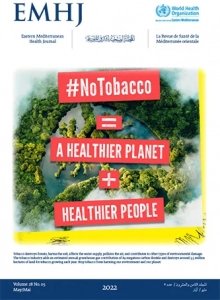Predicted 10-year risk of cardiovascular disease in Shahroud, Islamic Republic of Iran and the body mass index paradox
Authors
Mohammad H. Emamianm,1 Hassan Hashemi2 and Akbar Fotouhi3
Affiliations
1.Center for Health Related Social and Behavioral Sciences Research, Shahroud University of Medical Sciences, Shahroud, Islamic Republic of Iran.
2.Noor Ophthalmology Research Center, Noor Eye Hospital, Tehran, Islamic Republic of Iran
3.Department of Epidemiology and Biostatistics, School of Public Health, Tehran University of Medical Sciences, Tehran, Islamic Republic of Iran. (Correspondence to: Akbar Fotouhi: afotouhi@tums.ac.ir).
Abstract
Background: Assessment of the risk of cardiovascular disease is essential for disease prevention in every region.
Aims: This study aimed to investigate the 10‐year risk of cardiovascular disease and its determinants in an adult population in Shahroud, Islamic Republic of Iran.
Methods: A total of 4737 people aged 45–69 years were evaluated. The 10‐year risk of cardiovascular disease was calculated using the Framingham risk scoring method. Cardiovascular disease risk is reported as per cent risk and 95% confidence intervals (CI). Factors affecting the risk of cardiovascular disease were assessed using multiple beta regression analysis.
Results: The mean age of the participants was 55.9 years; 41% were males. The mean 10‐year risk of developing cardiovascular disease was 16.4% (95% CI: 16.0–16.8%); 28.3% of the participants had a risk of more than 20% (47.8% of the men and 14.9% of the women). Age, diabetes, smoking (only in men), high blood pressure, triglycerides (only in women), waist circumference, total cholesterol and high‐density lipoprotein cholesterol were significantly associated with cardiovascular disease risk. In men, there was a non‐ignificant increase in risk with higher body mass index up to body mass index 39.9 kg/m2; however, the risk decreased by 4.4% at body mass index ≥ 40 kg/m2 (P = 0.18).
Conclusions: The cardiovascular disease risk was very high, especially in men. Effective interventions should be implemented to reduce risk factors for cardiovascular disease. Longitudinal studies are recommended to investigate the effect of body mass index on the risk of cardiovascular disease.
Keywords: cardiovascular diseases, risk factors, body mass index, Iran

